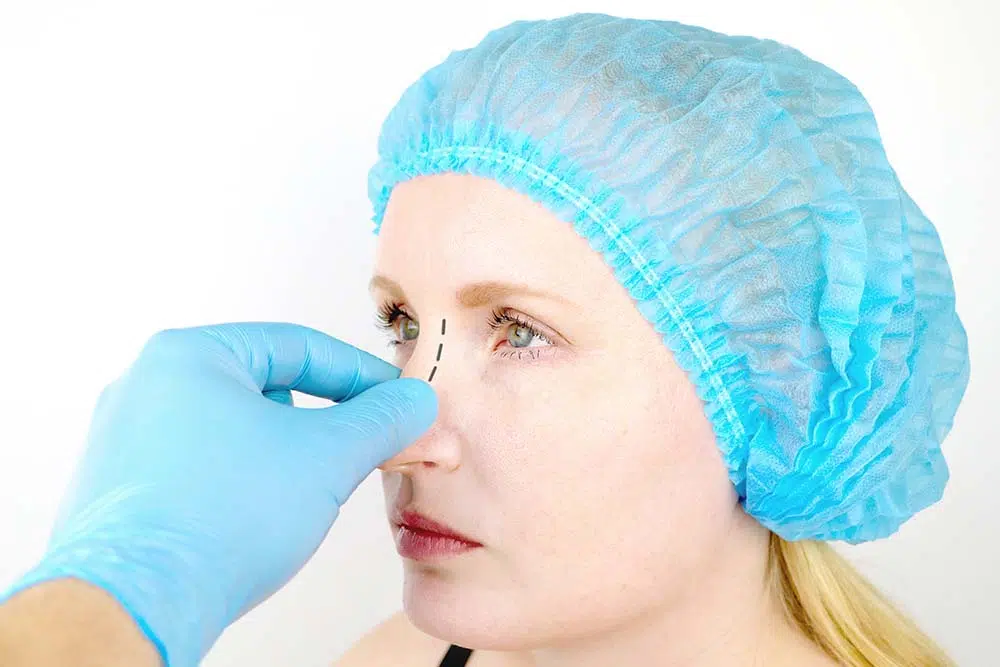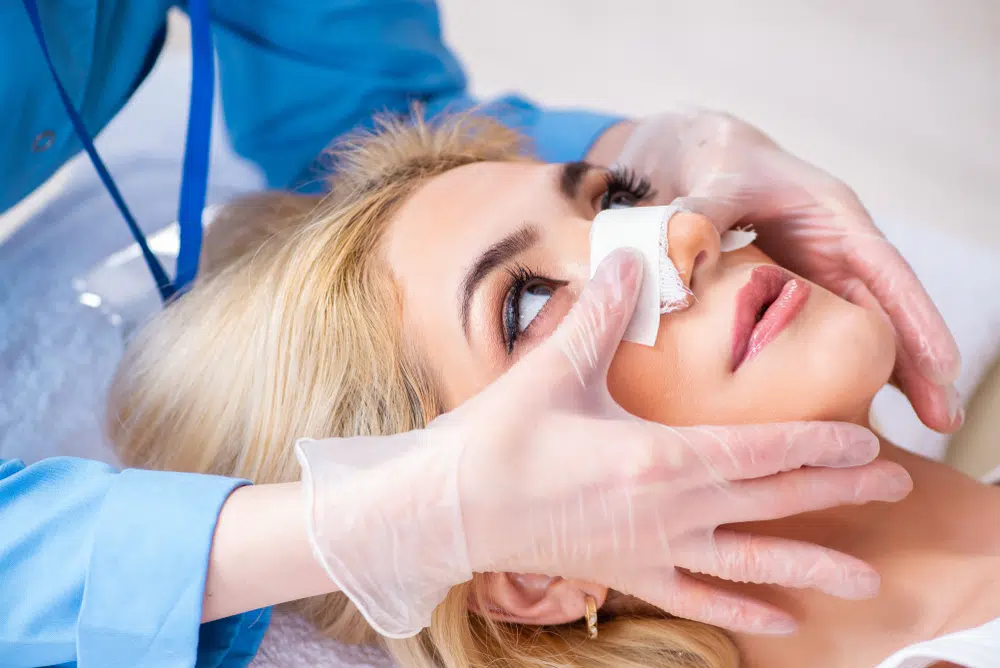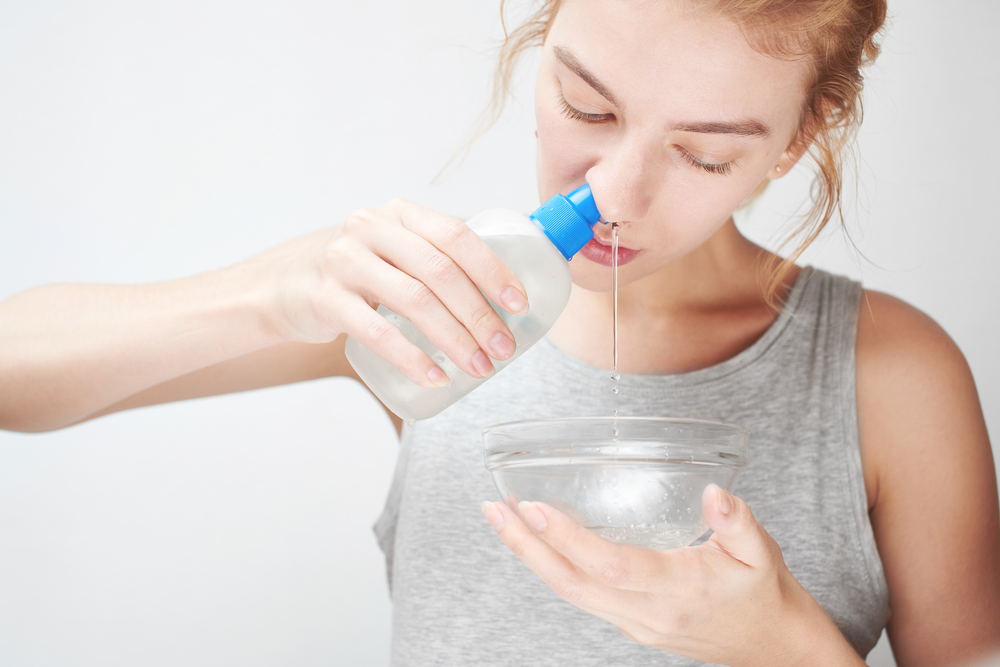The information provided below and throughout this website is presented for general educational purposes only and does NOT constitute professional medical advice. This information is NOT a substitute for professional medical advice and NO material on this site is intended to be a substitute for professional medical advice. Always seek the guidance of your doctor or other qualified health professional with any questions you may have regarding a health or a medical condition. Never disregard the advice of a medical professional or delay in seeking it because of something you have read on this website.
The nasal septum is the thin wall of cartilage and bone that separates the nostrils. Septoplasty is a nasal surgery done to correct a deviated septum. When the septum is deviated, it is off-center, which can cause breathing problems, frequent sinus infections, and other complications.
This article will provide a detailed day-by-day recovery timeline for patients who are interested in septoplasty, covering the entire recovery process from preparation for surgery to long-term recovery and tips.
About Septoplasty Surgery at Penn Medicine Becker ENT & Allergy
Breathing difficulties from a deviated septum can disrupt your life, but we’re here to help. The board-certified ENTs at Penn Medicine Becker ENT & Allergy offer this effective and permanent solution to their patients who are good candidates.
Septoplasty is a safe outpatient procedure, typically performed under general anesthesia. Through a small incision inside the nostril, the surgeon reshapes the deviated septum to improve airflow and relieve symptoms. In rare cases, the septum is removed, reconstructed, and re-implanted for the best possible results.
What to Expect Immediately After Septoplasty Surgery
After anesthesia, you may experience some pain, including discomfort, swelling, and nasal congestion. To relieve these symptoms, your doctor may prescribe pain relievers and recommend the use of a saline nasal spray to keep your nose clear and moist.
Patients should also follow these post-operative care instructions:
- Rest: It is very important to rest and avoid strenuous exertion for the first few days after the procedure to facilitate recovery and reduce the chance of complications.
- Elevate the head: Keeping your head elevated, especially while sleeping, can help decrease swelling and nosebleeds.
- Avoid blowing the nose: You should not blow your nose for at least a week after the procedure to avoid moving the splints or stitches and hindering recovery.
- Cold compresses: Applying cold compresses to the face can help alleviate swelling and discomfort.
- Follow-up appointments: Patients should attend all follow-up appointments with their surgeon to monitor their progress and address any concerns or complications that may arise during the recovery process.
- Additional Pain Management: If discomfort increases unexpectedly, consider contacting your healthcare provider for advice on adjusting your pain management strategy.

After the surgery, there are no restrictions on eating or bathing. However, patients are asked to refrain from drinking alcohol, as this will impede healing.
Patient Testimonials
The First 24 Hours After Septoplasty: Post-Operative Care Tips
On the first day after septoplasty surgery, patients may continue to experience some discomfort, swelling, and nasal congestion. It is essential to follow the post-operative care instructions provided by the surgeon and take any prescribed pain medication as needed.
During the first 24 hours, patients should:
- Rest: Get plenty of rest and avoid any strenuous activities to promote healing.
- Elevate the head: Continue to keep the head elevated, even when sleeping, to help reduce swelling and bleeding in the nasal area.
- Stay hydrated: Drink plenty of fluids to stay hydrated and help flush out any anesthesia remaining in the body.
- Avoid nose-blowing: Refrain from blowing the nose to prevent dislodging the splints or sutures and disrupting the healing process.
- Change nasal dressings: If a dressing was placed under the nose, change it as instructed; it is normal to have mild bloody drainage for the first 24 to 72 hours.
- Nasal Care: Keep using saline nasal spray as recommended to maintain moisture in your nasal passages and support the healing process.

Why Schedule a Septoplasty with Dr. Daniel G. Becker
Week One Recovery from Septoplasty: Daily Progress and Tips
During the first week after septoplasty surgery, patients should continue to follow their surgeon’s post-operative care instructions and attend the scheduled follow-up appointments. It is normal to experience some swelling, bruising, and nasal congestion during this time, but these symptoms should gradually improve as the healing process progresses.
During the first 24 hours, patients should:
- Gradually resume normal activities: As they begin to feel better, patients can slowly start to resume their daily activities, but should still avoid any strenuous exercise or heavy lifting.
- Continue using saline nasal spray: Use the saline nasal spray as prescribed by the surgeon to keep the nasal passages moist and clean.
- Avoid nose-blowing: Continue to refrain from blowing the nose to prevent disrupting the healing process.
- Monitor for signs of infection: Watch for any signs of infection, such as increased pain, redness, swelling, or discharge, and contact the surgeon if you notice any of these symptoms.
- Attend follow-up appointments: Attend any scheduled follow-up appointments with the surgeon to have the splints or sutures removed, and to monitor the progress of the healing process. Many surgeons have stopped using nasal packing for this procedure.
During this first week, patients may notice an improvement in their breathing as the swelling subsides and the nasal passages begin to clear. However, it is important to remember that the healing process is ongoing and that it may take several weeks or months for the full benefits of the surgery to become apparent.
Recovering from Septoplasty: Weeks Two to Six
During weeks two through six post-surgery, patients will continue to see improvements in their breathing and a reduction in swelling and bruising.

During this period, patients should:
- Gradually increase activity levels: As the healing process continues, patients can slowly increase their activity levels, including light exercise, but should still avoid heavy lifting or contact sports.
- Maintain nasal hygiene: Continue using the saline nasal spray as prescribed and avoid nose-blowing to prevent complications.
- Monitor for signs of complications: Be aware of any unusual symptoms, such as increased pain, bleeding, or difficulty breathing, and contact the surgeon if these occur.
- Follow a healthy diet: If your normal diet isn’t balanced, consider switching to a diet rich in vitamins and minerals that can help support the healing process and overall health.
Final Stages of Septoplasty Recovery: Weeks Seven to Twelve
By weeks seven through twelve, most patients will have experienced significant improvements in their breathing and overall nasal function. However, it is important to remember that residual swelling may persist.
During this period, patients should:
- Resume regular activities: Patients are normally given approval by their surgeons to return to their normal exercise routines during this time.
- Attend follow-up appointments: Continue attending any scheduled follow-up appointments to ensure proper healing and address any concerns with the surgeon.
- Be patient: Although most patients will see significant improvements by this stage, it is important to remember that healing might take many months. Be patient and allow the body to fully recover.
Long-Term Care After Septoplasty: Managing Comfort and Health
In the months following septoplasty surgery, patients should continue to see improvements in their nasal function and overall quality of life. To manage any residual soreness or discomfort, consider the following tips:
- Use over-the-counter pain relievers: If necessary, use over-the-counter pain relievers, such as ibuprofen or acetaminophen, to manage any lingering discomfort. Always consult with the surgeon before taking any medications.
- Apply warm or cold compresses: Applying a warm or cold compress to the nasal area can help alleviate discomfort and reduce any residual swelling.
- Practice good nasal hygiene: Continue to maintain good nasal hygiene by using saline nasal spray and avoiding nose-blowing.
- Stay hydrated: Drinking plenty of water can help keep the nasal passages moist and reduce the risk of irritation.
- Avoid irritants: Steer clear of environmental irritants, such as smoke, dust, and allergens, which can cause inflammation and exacerbate soreness.
Remember to consult with the surgeon if any concerns or complications arise during the recovery process. With patience and proper medical care, patients can expect to enjoy the full benefits of septoplasty surgery and improved nasal function in the long term.

If you’re looking for a qualified and experienced ENT specialist to help with your septoplasty surgery, choose Penn Medicine Becker ENT & Allergy. With our team of knowledgeable and caring professionals, you can be sure that you will have an optimal recovery experience. Contact Penn Medicine Becker ENT & Allergy today to learn more about how they can help make your septoplasty surgery a success!

